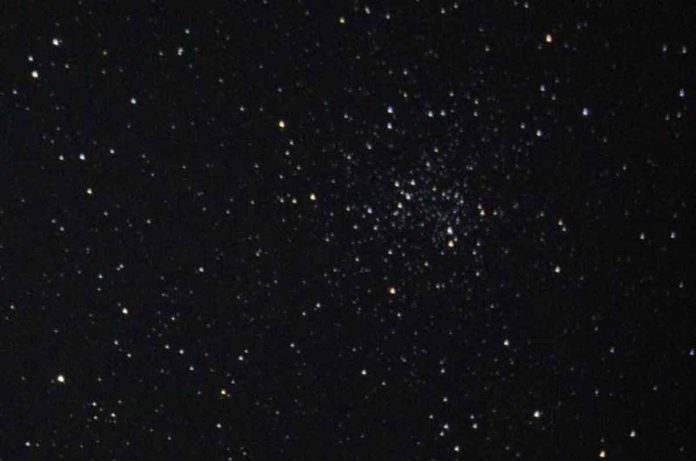Indian astronomers investigated an open cluster known as NGC 2506 using the AstroSat spacecraft. The study identified over 2,000 member stars of this cluster and provided new information about its properties. On August 29, the findings were published in Monthly Notices of the Royal Astronomical Society.
Open clusters (OCs) are groups of stars that are gravitationally bound to each other and formed from the same giant molecular cloud. More than 1,000 of them have been discovered so far in the Milky Way, and scientists are still looking for more in the hope of discovering a variety of these stellar groupings. Extending the list of known galactic open clusters and studying them in depth could help us better understand the formation and evolution of our galaxy.
NGC 2506 (also known as Caldwell 54) is a mildly elongated, intermediate-age OC located at a distance of approximately 12,700 light years. Despite the fact that this cluster has been studied extensively, little is known about its stellar content. Previous observations have suggested that NGC 2506 exhibits mass segregation, with the lower mass member stars being more likely to be in the outer parts of the cluster.
A team of astronomers led by Anju Panthi of the Birla Institute of Technology and Science in Pilani, India, performed multi-wavelength observations of NGC 2506, primarily using the UltraViolet Imaging Telescope (UVIT) onboard AstroSat, to shed more light on the stellar populations of this cluster.
“We used AstroSat/UVIT data and other archival data to study an intermediate-age open cluster NGC 2506,” the researchers wrote.
Using a machine learning-based algorithm, the researchers identified 2,175 cluster members of NGC 2506. Nine blue straggler stars (BSS), three yellow straggler stars (YSS), and three red clumps (RC) stars were discovered among them.
Furthermore, the astronomers discovered and estimated the fundamental properties of three BSS, two YSS, and three RC stars. These objects were discovered to be white dwarfs with masses ranging from 0.2 to 0.8 solar masses and effective temperatures ranging from 13,250 to 31,000 K.
The effective temperatures of BSS stars in NGC 2506 range from 7,750 to 9,750 K, which is consistent with the cluster’s age of approximately 2 billion years. YSS stars have temperatures ranging from 6,500 to 6,750 K, while RC stars have temperatures ranging from 5,000 to 5,250 K.
According to the findings, mass transfer in a binary system mechanism is likely to be responsible for the formation of at least 40% of the BSS and YSS systems in NGC 2506. They do not, however, rule out a merger in a triple system with a close inner binary scenario.

